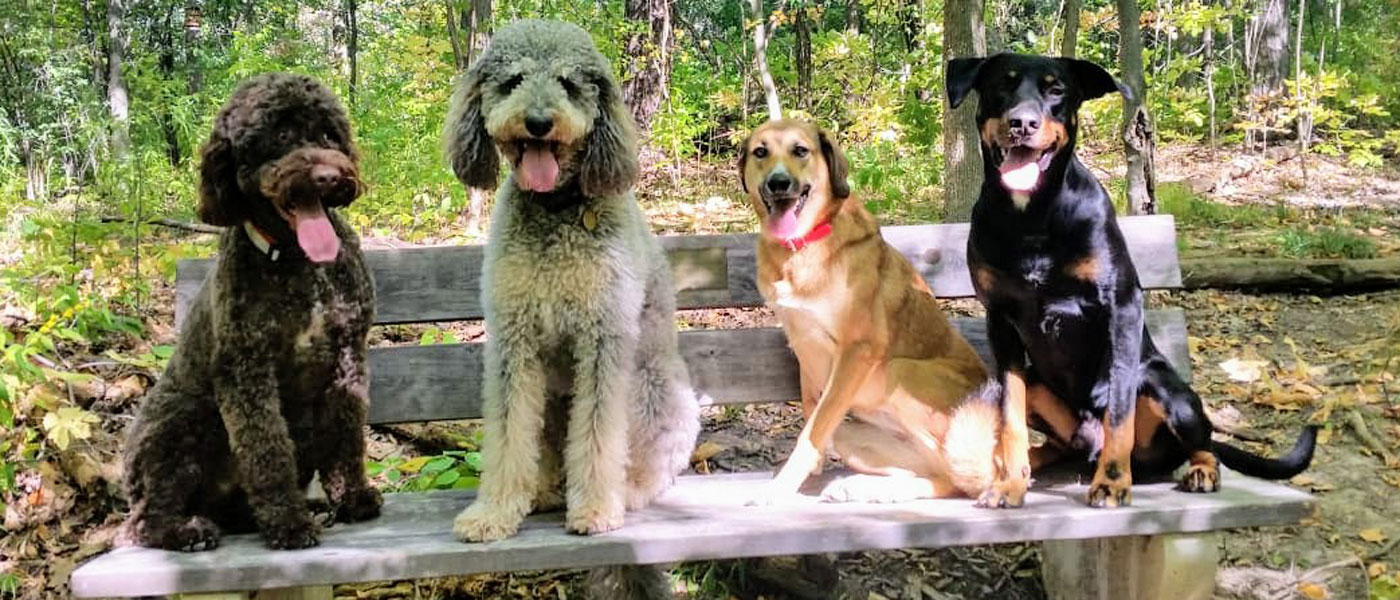
Do your dog's antics during on-leash walks say more than "Get off the phone!"?
Lots of dogs need extra help to learn to walk well on a leash.
Your dog may pull, bark, lunge, air snap, brake or freeze. And you may sense their fear, frustration, over-enthusiasm, or confusion (not to mention your own emotions in the mix!).

Sometimes you just need to teach the mechanics of leash walking. But usually it's more complicated. Maybe your dog is frustrated because you're not saying hi to every passerby. Or maybe they're anxious about noise, other dogs, and/or tall men in hats!
We'll help you figure out the function of your dog's unwanted leash behaviours, and give you simple training solutions.
In person or live on-line coaching
3 session package of 1:1 coaching includes
$279 + HST
Turn your daily reconnaissance mission into a relaxed and congenial dog walk.
Topics covered may include
As you will often hear dog professionals say, "It depends". First, rule out physical causes like pain or fatigue.
Then take a close look at what happens right before your dog stops.
Also pay attention to what happens afterwards (including your response!). Often what looks like random stopping turns out to be a predictable pattern that you can work to change, perhaps with our assistance.
If you ever want evidence about how your dog's environment can cue their behaviour, observe how they behave on the way to the park or the beach!
These moments, often so frustrating, are actually the best opportunities to work with our dogs. Because they're totally predictable!
Instead of grinding your teeth daily (and sometimes for years), make working consistently with your dog in this context your key goal for a month or two. Start from scratch with loose leash walking mechanics, and heavily reinforce the behaviour you want. You could see an amazing improvement. And if you don't, contact us.

"Leash reactivity" is a thing! There are a variety of reasons. When we put dogs on a leash, we constrain their capacity to communicate with other dogs, as well as interfering with their ordinary approach behaviours (relaxed arc approach vs. head to head on a sidewalk).
And we often hold the leash too tightly, with too much tension.
For more information about leash reactivity, read this excellent blog post by Dr. Jennifer Summerfield.
http://www.drjensdogblog.com/why-does-my-dog-act-like-cujo-understanding-leash-reactivity/
And for an interesting look at dog body language in canine meet'n'greet situations (one dog on-leash, one off), watch this video by Chirag Patel.
https://www.youtube.com/watch?v=QOx9GfVGDLI
Our boy is full of beans, and from their very first meeting, Mason has trained, supported and loved him. It was such a blessing to know he was in amazing hands when with her. We can’t recommend Mason enough!
- Lauren, caretaker & companion to Atticus